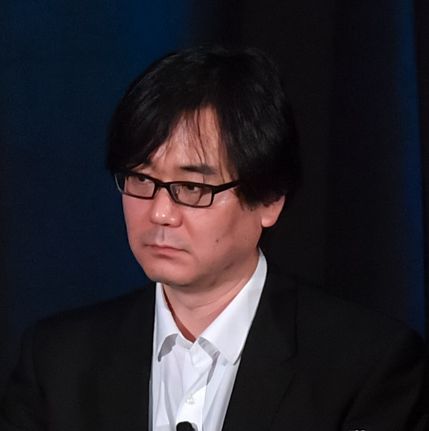
By 1990, the Japanese video game company Sega wanted a foothold in the video game console market with its 16-bit console, the Sega Genesis. Sega's efforts had been stymied by the dominance of Nintendo; the Genesis did not have a large install base and Nintendo did not take Sega seriously as a competitor. Sega of America CEO Michael Katz attempted to challenge Nintendo with the "Genesis does what Nintendon't" marketing campaign and by collaborating with athletes and celebrities to create games. These efforts did not break Nintendo's dominance, and Katz was replaced by Tom Kalinske, formerly of Mattel.
Sega president Hayao Nakayama decided Sega needed a flagship series and mascot to compete with Nintendo's Mario franchise. Nintendo had recently released Super Mario Bros. 3, at the time the bestselling video game ever. Sega's strategy had been based on porting its successful arcade games to the Genesis; however, Nakayama recognized that Sega needed a star character in a game that could demonstrate the power of the Genesis's hardware.[1] An internal contest was held to determine a flagship game, with a focus on the American audience.] Among the teams working on proposals were artist Naoto Ohshima and programmer Yuji Naka. The gameplay of Sonic the Hedgehog (1991) originated with a tech demo created by Naka, who had developed an algorithm that allowed a sprite to move smoothly on a curve by determining its position with a dot matrix. Naka's prototype was a platform game that involved a fast-moving character rolling in a ball through a long winding tube. Sega management accepted the duo's project and they were joined by designer Hirokazu Yasuhara.

After Yasuhara joined Naka and Ohshima, their focus shifted to the protagonist, who Sega hoped could become its mascot The protagonist was initially a rabbit able to grasp objects with prehensile ears, but the concept proved too complex for the hardware. The team moved on to animals that could roll into a ball, and eventually settled on Sonic, a teal hedgehog created by Ohshima. Naka's prototype was expanded with Ohshima's character design and levels conceived by Yasuhara. Sonic's color was chosen to match Sega's cobalt blue logo, and his red and white shoes were inspired by the cover of Michael Jackson's 1987 album Bad. His personality was based on then-Governor of Arkansas Bill Clinton's "can-do" attitude. The antagonist, Doctor Eggman, was another character Ohshima had designed for the contest. The team thought the abandoned design was excellent and redesigned it as a villain.] The team took the name Sonic Team for the game's release.